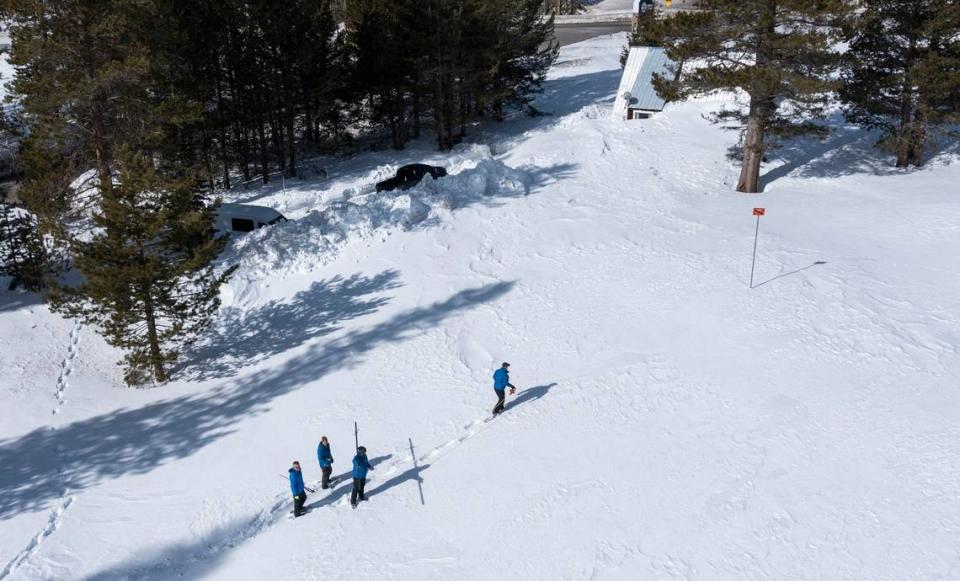California snowpack at an ‘incredible’ depth. But keep those sprinklers off, state urges
California’s snowpack is at a historic level. But state water officials still want you to keep those sprinklers off.
More than 85 inches of snow was measured at Phillips Station in the high Sierra on Wednesday, nearly double the average for this time of year and well above the average for April 1 — the statewide average, according to state Department of Water Resources officials, was calculated at 33.7 inches. The stored water content is ahead of the epic 1982-83 winter that was the wettest in at least the past 40 years.
Similar readings were measured throughout the Sierra. The snowpack provides roughly 30% of the state’s water supply.
“Our snowpack is off to an incredible start and it’s exactly what California needs to really help break from our ongoing drought,” said Sean de Guzman, the snow surveys and water supply forecasting manager for DWR.
However, there are still two months left in California’s wet season, and state officials are far from declaring an end to the drought. A solid start to last year’s winter was followed by the three driest months on record.
“This is a traditional wet month that is actually starting off pretty dry and given where the forecast are, that dryness is expected to continue,” DWR director Karla Nemeth said.
“I don’t want to be the downer here, but I do want to make sure everyone understands we need to exercise caution,” Nemeth added.
As of Wednesday, the statewide snowpack was calculated at 205% of normal for Feb. 1, 128% of the average come April 1. The southern Sierra had a higher snow-water equivalent, 249% of normal for the first of the month. The central and northern Sierra regions were at 203% and 171%, respectively.
A series of January storms has left many of the state’s reservoirs in good shape. Nearly 9 million acre-feet of water has been added to the reservoir system since December, de Guzman said (one acre-foot is equivalent to about 326,000 gallons).
Oroville Lake, the second-largest, is at 112% of its historical average, and other smaller reservoirs such as Folsom, New Bullards Bar and Don Pedro are also above their average levels for this time of year.
Still, some reservoirs are below their average for this time of year.
Shasta Lake, the state’s largest reservoir, is at 87% of its historical average for today’s date. Trinity, San Luis and New Melones – also significant reservoirs – are below the average as well.
Nemeth urged California residents to “turn off your sprinklers.”
“When we think about drought, we think about, ‘Does this big January actually bust the drought in California?’” she said. “It’s too soon to tell.”


